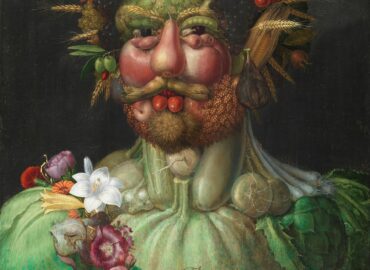The Arts and Crafts movement, from 1860 to 1920, emerged in reaction to Victorian designs which prioritized speed over honesty and thoughtful craftsmanship. Arts and Crafts designers favored honest and thoughtful craftsmanship over speedy execution of designs.
They believed that good design boosted character. You’ll see evidence of this belief everywhere from home furnishings, wallpaper and textiles to stained glass windows.
Nature-Inspired Designs
One of the driving principles behind Arts and Crafts design was an appreciation for nature as its source of inspiration. This natural theme can be seen through earth tones, wood trim and even woven rattan furniture; or through nature-inspired patterns like curving branches and leaves or tree trunk rings.
William Morris was one of the best-known designers associated with the Arts and Crafts movement, and his works often depict natural scenes like hedgerows, wildflower meadows, or other aspects of British countryside life. These designs offered an alternative to ornate Victorian designs popular at the time.
Arts and Crafts style emphasizes organic forms found in nature by favoring rounded forms over straight ones; this can be seen in chairs, tables, and other pieces of furniture fashioned in this fashion. This choice was deliberately made to draw out its organic shapes in stark contrast with Victorian-era geometric lines that often used rigidity as their basis.
The Arts and Crafts movement emerged as a response to industrialization of furniture and home accessories, leading to a preference for handcrafted over factory produced items that had become fashionable at that time. This trend continues today as more people appreciate handmade goods than ever.
Arts and Crafts movement designers were heavily influenced by English artist John Ruskin, whose writing inspired them with this mantra: ‘Have nothing in your house that you do not consider useful or beautiful.” This quote from John Ruskin served as a source of motivation for generations of designers.
Introducing Arts and Crafts into your home can be simple; using light-colored wallpaper with nature-inspired patterns such as branches or leaves is a good place to start. Or for an elaborate touch that includes flowers and plants found naturally.
Rectilinear Lines
Straight lines are one-dimensional figures with infinite extent that extend in both directions, representing the shortest possible path between two points in geometry.
Rectilinear refers to objects or design styles characterized by straight lines; such as arts and crafts which utilizes such features. Rectilinear elements are an integral component of arts and crafts designs that employ them.
Rectilinear arts and crafts projects emphasize utility over ornamentation. As an answer to industrialized decorative design, rectilinear design sought to bring intricate decoration back into buildings and home furnishings while emphasizing vernacular forms like those inspired by British fauna and flora.
Arts and crafts-inspired home interiors typically incorporate wood accents such as wooden ceiling beams, hardwood floors, or wood-paneled walls into their decor. When searching for items in this style it is best to look for hand-crafted ones instead of mass produced ones – antique markets or artisan shops are great places to find authentic items that complement the Arts and Crafts movement – after all they believe strongly in supporting local makers and artisans!
Retilinear design styles can create a clean and modern feel in your home, while still adding warmth by incorporating natural materials and earth-tone colors.
As for color options, consider earth tones such as cream, beige, green and muted yellow for your selections. This scheme works well in any room of the home but particularly well for kitchens and bathrooms.
To incorporate arts and crafts style into your home, try adding wallpaper or fabrics featuring floral motifs, birds, plants or geometric patterns into the home. For an eclectic touch, consider pairing floral-print wallpapers with animal print stair runners; this will help blend traditional with contemporary styles while remaining true to design movement principles.
Organic Palettes
Arts and crafts interior design features natural hues to bring natural beauty into living spaces. Ranging from earthy browns to vibrant greens, natural shades reflect the connection between art and nature – from earthy browns to vibrant greens – as seen through earthy tones like brown, moss or bark that inspired their colors; complementing warm handcrafted details that define this design style perfectly.
As an alternative to Victorian furnishings and decorative accents, arts and crafts designs emphasize traditional craftsmanship using high-quality materials. William Morris, Gustav Stickley and Charles Rennie Mackintosh all contributed significantly to this movement by emphasizing handcrafted pieces as artfully made accents in living rooms and home environments – this approach remains popular today through designers like Ben Pentreath.
Arts and crafts style living rooms often incorporate embroidered textiles as part of its signature elements, adding an air of sophistication. Hand-embroidered intricate patterns or motifs add beauty and artistry to every part of a space from curtains to chairs; similar woven carpets or rugs offer warmth, coziness and welcoming ambience for this aesthetic.
Wood tones are another hallmark of arts and crafts homes, with hickory, oak and cherry being popular choices for furniture and cabinetry craftwork. Natural-looking maple and walnut can also be seen used for accent pieces and trim. Softer hues in arts and crafts homes complement well with these natural wood tones while neutral colors such as tan, taupe or gray work well when it comes to neutral color palettes such as these.
Dark hues add drama and depth to an arts and crafts room, recalling the earth, trees and foliage that they recall. Rich hunter greens, dusky reds and deep blue-greens are great choices that complement each other when used together; light wood tones should also be introduced as balancers when selecting darker tones.
Natural Materials
Arts and crafts design places great importance on natural materials such as wood, stone and textiles woven by weaving machines – often used to create warm spaces inspired by the themes associated with nature-inspired themes in arts and crafts decor. Artisan-crafted furniture like intricately carved wooden chairs or fabric decorations often reflect this movement’s craftsman-like craftsmanship; one notable founder William Morris was famous for creating beautiful textile patterns featuring stylized natural motifs with medieval influences using raw natural materials as part of his patterns.
Proponents of the arts and crafts movement believed that machine-made objects did not reach the same high quality as handmade items, thus reinvigorating traditional craftsmanship values and celebrating simple quality materials. Morris and his followers frequently stressed the need to connect the maker directly with his or her finished product in stark contrast with mass produced industrial goods; also using natural motifs would bring closer the maker to nature.
As its name implies, Arts and Crafts was heavily influenced by the arts and crafts movement in the 1880’s; it also draws upon other artistic movements such as Art Nouveau. Its organic lines and flowing motifs can often be found in Gustav Stickley furniture designs or Greene & Greene or Frank Lloyd Wright bungalows or ultimate bungalows.
Another hallmark of arts and crafts decor is its meticulous attention to detail in every piece. Articulated wooden furniture, intricate hand embroidery fabrics, and elaborately woven carpets all fall within this interior design style’s realm – creating a comfortable, warm, inviting atmosphere in any space!
In this traditional hallway, a Morris & Co pattern of tangled hedgerows and wildflower meadows contrasts beautifully with Warner House’s animal print stair runner for an arts and crafts vibe without going overboard. The result is an attractive traditional home that embodies arts and crafts style without overdoing it.

Lynn covers artistic collaborations, curating stories that celebrate craftsmanship and design innovation.



